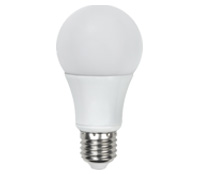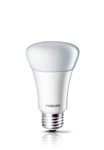
The LED lamp retrofit market continues to be a much sought after arena with more and more players entering the market. With an abundance of choices available, it is important to do your research to understand some key parameters of these novel light sources. This will help to find a LED lamp solution that not only fits your current needs, but also those in the future.
Have you ever wondered why the LED lamp that you just bought to replace your typical incandescent or halogen bulb is so much heavier? It is because of the need for thermal management in the LED lamp and the associated use of a heavy heat sink. Contrary to popular notion, LEDs do generate heat and unless that heat is dissipated properly in the lamp, the LEDs can heat up leading to lower lumens, lower energy efficacy, shorter lamp life and shift in color. Most LED lamps use a mass of shaped die cast aluminum as the heat sink material. However recent innovations in thermal management by some companies have enabled substantial reductions in LED lamp weight. This involves sophisticated thermal modeling and use of alternate forms of metal fabricated by different methods.
The LEDs in a solid state lamp are driven by DC but the socket into which the lamp is screwed is powered by AC. Electronics located in the LED lamp convert the AC into DC. Here, too, not all LED lamps are the same. Some innovative companies are using sophisticated electronic circuitry, which leads to high power conversion efficiency so that much less electrical energy is lost as heat in the circuit components and more is available to drive the LEDs. This leads to higher LPW (Lumens per Watt) and a more energy-efficient lamp.
The quality of dimming is another parameter that differentiates LED lamps from different suppliers. Robust dimming is the new trend among reputed suppliers who design their LED lamp electronics in such a way as to be compatible with a wide variety of leading edge dimmers. Flicker is minimized and the lower limit of dimming is on its way down to about 5 percent or less.
Many people love the warm tone that results when you dim an incandescent lamp. Do you wonder if this nice ambiance can be achieved by dimming a LED lamp? The answer is: yes, it can be done. Using advanced technology, a few forward-looking companies have recently introduced LED lamps with this special effect. This is essentially done by using proprietary algorithms to vary the current through two or more strings of LEDs of different color temperature using specially designed driver electronics.
How about effortless interaction with the LED lamps in your house? Would you like to switch your lamps on/off and dim them using a smart phone? Would you like to have the ability to do this remotely, say from your office? Would you like to set lamps in different rooms to different scenes? All of this is possible with wireless LED lamps. These lamps incorporate a radio frequency (RF) controller board in the lamp along with the driver electronics. A hub located in the house talks to the radio in the lamp using a wireless protocol like ZigBee and using a smart phone and the web, one can control all the wireless lamps in the house. Some innovative companies have recently introduced such lamps for the retail market.
It is important for the consumer to realize that not all LED lamps are created equal. LED lamps incorporate a wide variety of technical disciplines: materials, thermal management, electronics, optics, LED and process engineering. The best providers are able to design high performance into the product at a good value.



